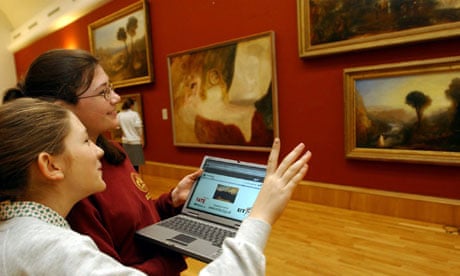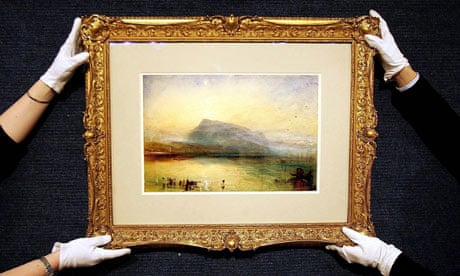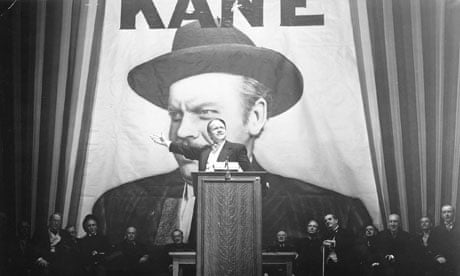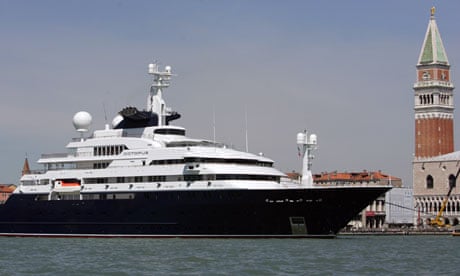He rarely gives interviews, but a new book offers an intriguing insight into what drives the enigmatic collector’s passion for art
You’ve been successful at discovering new artistic talent. But are there not always great artists who go undiscovered?
By and large, talent is in such short supply that mediocrity can be taken for brilliance rather more than genius can go undiscovered.
You have been described both as a “super-collector” and as “the most successful art dealer of our times”. Looking back on the past 20 years, how would you characterise your activities?
Who cares what I’m described as? Art collectors are pretty insignificant in the scheme of things. What matters and survives is the art. I buy art that I like. I buy it to show it off in exhibitions. Then, if I feel like it, I sell it and buy more art. As I have been doing this for 30 years, I think most people in the art world get the idea by now. It doesn’t mean I’ve changed my mind about the art that I end up selling. It just means that I don’t want to hoard everything for ever.
Your practice of buying emerging artists’ work has proved highly contagious and is arguably the single greatest influence on the current market because so many others, both veteran collectors and new investors, are following your lead, vying to snap up the work of young, relatively unknown artists. Do you accept that you are responsible for much of the speculative nature of the contemporary art market?
I hope so. Artists need a lot of collectors, all kinds of collectors, buying their art.
Do you think you have messed up anybody’s life by flogging off all their work?
I don’t buy art just to make artists happy any more than I want to make them sad if I sell their work. Don’t you think you’re being a bit melodramatic?
Before you went into advertising, what other career did you consider?
“Consider” isn’t quite how it was. At 17 and with two O-levels to show after a couple of attempts, a career path wasn’t realistic, nor a chat with the Christ’s College careers officer, who wouldn’t have recognised me in any event as my absenteeism record was unrivalled. I answered a situations vacant ad in the Evening Standard for a voucher clerk, pay £10 weekly. It was in a tiny advertising agency in Covent Garden, and a voucher clerk had to traipse round all the local newspaper offices in Fleet Street – of which there were hundreds at the time – and pick up back copies of papers in which the agency’s clients had an advert appearing. The voucher clerk’s role was to get the newspaper, find the ad, stick a sticker on it so the client could verify its appearance, and the agency could get paid. Vital work, obviously. One of the advantages of it being a tiny agency was that one day they got desperate when their creative department (one young man) was off sick, and they asked me if I could try and make up an ad for one of their clients, Thornber Chicks. This ad was to appear in Farmer and Stock-Breeder magazine, and hoped to persuade farmers to choose Thornbers, as their chicks would grow to provide many cheap, superior quality eggs and a fine return. I didn’t know how you wrote an ad, or indeed how to write anything much other than “I will not be late for assembly”, for which I had been provided much practice. So I looked through copies of Farmer and Stock-Breeder and Poultry World, chose some inspiring-sounding words and phrases, cobbled them together, stuck on a headline – I think I stole it from an old American advertisement – and produced “Ask the man who owns them” as a testimonial campaign featuring beaming Thornber farmers. The client bought it.
Does a love of art, particularly Renaissance art on a biblical theme, make one feel closer to God?
I believe God must be very disappointed in his handiwork. Mankind has clearly failed to evolve much in all these years; we’re still as cretinous and barbaric as we were many centuries ago, and poor God must spend all day shaking his head at our vileness and general ineptitude. Or perhaps, we might just give him a good laugh. But of course, I hope God likes our art enough to forgive us our sins, particularly mine.
I like the new gallery but hated your gallery in County Hall. What were you thinking!
I was stupid, stupid, stupid. I got bored with knowing my first gallery in Boundary Road too well, so well in fact that I could hang my shows to the centimetre while sitting on a deckchair in Margate. Plus, I wanted to introduce new art to as wide a public as possible, and I went for somewhere with a much bigger footfall on the South Bank next to the London Eye. So I gave up the airy lightness of Boundary Road for small oak-panelled rooms, and nobody liked it. I saw it as a challenge, but one which I clearly wasn’t up to.
Which artists do you display in your own home? Are you constantly changing the works you have there? Is there a core of favourites which stay there?
My house is a mess, but any day now we’ll get round to hanging some of the stacks of pictures sitting on the floor.
Who are the artists you are most pleased with discovering?
Over the years I have been very lucky to see some great artists’ work just at the start of their careers, so that I could feel “pleased with discovering” them. However, I have also “discovered” countless artists who nobody but me seemed to care much for and whose careers have progressed very slowly, if at all. So I certainly don’t have an infallible gift for spotting winners. I think it’s fair to say that I bought Cindy Sherman in her first exhibition in a group show, with some of her black-and-white film stills framed together in those days as a collage of 10 images, and went on to buy much of her work for the next few years. I bought most of the work from Jeff Koons’s first exhibition in a small and now-defunct artist-run gallery in New York’s East Village, which included the basketballs floating in glass aquariums and the Hoovers and other appliances in fluorescent-lit vitrines. But this is getting too self-congratulatory and the truth is I miss out on just as many good artists as I home in on.
Are paintings a better investment than sharks in formaldehyde? The Hirst shark looks much more shrivelled now than it used to, but a Peter Doig canvas will still look great in 10 years and will be much easier to restore.
There are no rules about investment. Sharks can be good. Artists’ dung can be good. Oil on canvas can be good. There’s a squad of conservators out there to look after anything an artist decides is art.
Why do overseas museums have better collections of Britart than the Tate?
Because the Tate curators didn’t know what they were looking at during the early 1990s, when even the piddliest budget would have bought you many great works. But I’m no better. I regularly find myself waking up to art I passed by or simply ignored.
Looking ahead, in 100 years’ time, how do you think British art of the early 21st century will be regarded? Who are the great artists who will pass the test of time?
General art books dated 2105 will be as brutal about editing the late 20th century as they are about almost all other centuries. Every artist other than Jackson Pollock, Andy Warhol, Donald Judd and Damien Hirst will be a footnote.
If you were commissioning your own portrait, in which medium would you choose to be represented?
I’d rather eat the canvas than have someone paint me on it.
Do you ever do the cooking?
I can do eggs. And cornflakes.
Should the country be spending money on saving old masters for the nation, or buying up works by the next generation of artists?
At the risk of being lynched – again – by the art crowd, I don’t think there is a great need any more to save paintings for the nation at the cost of supporting new art. What difference does it make if a Titian is hanging in the National Gallery, the Louvre or the Uffizi? This isn’t the 18th century: people travel, so there’s no need to be nationalistic about the world’s art treasures. Much more important is to back living artists.
What is your favourite museum in the world?
The Prado in Madrid. I have a weakness for Goya, but the museum itself is so unfussy, and clearly loves to display its many masterpieces as unshowily as possible, each visit reinforces my belief in the enduring importance of art.
I know very little about contemporary art but have £1,000 to invest. Any advice?
Premium bonds. Art is no investment unless you get very, very lucky, and can beat the professionals at their game. Just buy something you really like that will give you a thousand pounds’ worth of pleasure over the years. And take your time looking for something really special, because looking is half the fun.
What is your proudest achievement?
I don’t do pride. That’s not to say I don’t have an ego the size of an aircraft hangar, but I’m not even very proud of that.
How much money have you lost in the recession?
I daren’t look.
Aren’t those dot paintings [by Damien Hirst] just like wallpaper?
You may as well say that Rothko paintings look like nice rugs. There’s no crime in art being decorative.
With Mark Rothko’s paintings, people say that they evoke “infinity”. Do you see it this way?
My understanding of infinity goes something like this: every 100 years a sparrow flies to the top of a large mountain, and cleans its beak by scraping it on the highest rock. By the time the mountain has been scraped away to a small pile of dust, that would be the equivalent of the first second of infinity. I thought of that the last time I stood in front of a Rothko and neither felt an overwhelming sense of infinity, nor had a mystical experience of any kind. Maybe I’ve just seen too many Rothkos and they don’t pulsate with ethereal splendour for me anymore. Or perhaps I never quite got the wonder of Rothko.
Was “Sensation” your high point and have you been going backwards since?
Well, it is never nice to be told your best days are behind you. But you’re probably right. I certainly was more dynamic once, building my advertising business and my art collection with ferocious energy. Now that I have fizzled out, I still enjoy putting on shows of art that I like and introducing new artists to our visitors, so I hope it makes it worthwhile to plod on.
Of the contemporary artists who died young – Jean Michel Basquiat, Eva Hesse, Felix Gonzalez-Torres – who do you think would have achieved long-term greatness?
Without being too callous, many artists achieve iconic status by dying before their work has a chance to dwindle into stale repetition. So Pollock is revered for his masterpieces, and we will never see what he might have produced had he continued making art for another 30 years. I have never really loved Basquiat’s work, even though I was taken down to dealer Annina Nosei’s basement where she had this young boy painting away there, telling everyone who’d listen that in young Basquiat she’d found a genius and for only $500 a picture. Silly me, I found it all derivative and decorative, so that shows how much my taste can be trusted. Eva Hesse was fantastic. Felix Gonzalez-Torres was less so. Forgive my tackiness, but my favourite dead-artist-who-could-have-been-a-contender was Scott Burton. He did get a bit of recognition in the late 1970s with his quirky take on furniture as sculpture, and vice versa, and with his “rock chairs” formed by two sheer cuts into a boulder. Today he seems largely forgotten, except by a handful of fans who were around at the time, and it’s quite rare to see him in surveys of key American artists. But that’s what he was.
Can you paint or draw yourself?
Not even a little bit.
Who is the next big artist?
That’s what the TV show will discover, we’re hoping.
The Big Question – What do you think of the art world?
David Sylvester [the late critic] and I used to play a silly little game. We used to ask ourselves, which of the following – artist, curator, dealer, collector or critic – we would least like to be stranded with on a desert island for a few years. Of course, we could easily bring to mind a repellent example in each category, and it made the selection ever-changing, depending on who we ran into that bored us most the previous week. Anyway, we pretty much agreed on the following:
Dealers
An occupational hazard of some of my art collector friends’ infatuation with art is their encounters with a certain type of art dealer. Pompous, power-hungry and patronising, these doyens of good taste would seem to be better suited to manning the door of a night club, approving who will be allowed through the velvet ropes. Their behaviour alienates many fledgling collectors from any real involvement with the artist’s vision. These dealers like to feel that they “control” the market. But, of course, by definition, once an artist has a vibrant market, it can’t be controlled. For example, one prominent New York dealer recently said that he disapproved of the strong auction results, because it allowed collectors to jump the queue of his ‘waiting list’. So instead of celebrating an artist’s economic success, they feel castrated by any loss to their power base. And then there are visionary dealers, without whom many great artists of our century would have slipped by unheralded.
Critics
The art critics on some of Britain’s newspapers could as easily have been assigned gardening or travel and been cheerfully employed for life. This is because many newspaper editors don’t themselves have much time to study their “Review” section, or have much interest in art. So we now enjoy the spectacle of critics swooning with delight about an artist’s work when its respectability has been confirmed by consensus and a top-drawer show – the same artist’s work that 10 years earlier they ignored or ridiculed. They must live in dread of some mean sod bringing out their old cuttings. And when Matthew Collings, pin-up boy of TV art commentary, states that the loss of contemporary art in the Momart fire didn’t matter all that much – ‘these young artists can always produce more’ – he tells you all you need to know about the perverse nature of some of those who mug a living as art critics. However, when a critic knows what she or he is looking at and writes revealingly about it, it’s sublime.
Note: Since writing this I have got to know Matthew Collings a little and like him a lot. So I wish I had picked on one of our other distinguished art critics to moan about.
Curators
With very few exceptions, the big-name globe-trotting international mega-event curators are too prone to curate clutching their PC guidebook in one hand and their Bluffer’s Notes on art theory in the other. They seem to deliver the same type of Groundhog Day show, for the approval of 250 or so like-minded devotees. These dead-eyed, soulless exhibitions dominate the art landscape with their sociopolitical pretensions. The familiar grind of 1970s conceptualist retreads, the dry-as-dust photo and text panels, the production line of banal and impenetrable installations, the hushed and darkened rooms with their interchangeable flickering videos are the hallmarks of a decade of numbing right-on curatordom. The fact that in the last 10 years only five of the 40 Turner Prize nominees have been painters tells you more about curators than about the state of painting today. But when you see something special, something inspired, you realise the debt we owe great curators and their unforgettable shows – literally unforgettable, because you remember every picture, every wall and every juxtaposition.
Note: Since writing this there have been 16 more Turner Prize nominees, of whom two have been painters.
Artists
If you study a great work of art, you’ll probably find the artist was a kind of genius. And geniuses are different to you and me. So let’s have no talk of temperamental, self-absorbed and petulant babies. Being a good artist is the toughest job you could pick, and you have to be a little nuts to take it on. I love them all.
Collectors
However suspect their motivation, however social-climbing their agenda, however vacuous their interest in decorating their walls, I am beguiled by the fact that rich folk everywhere now choose to collect contemporary art rather than racehorses, vintage cars, jewellery or yachts. Without them, the art world would be run by the state, in a utopian world of apparatchik-approved, culture ministry-sanctioned art. So if I had to choose between Mr and Mrs Goldfarb’s choice of art or some bureaucrat who would otherwise be producing Vat forms, I’ll take the Goldfarbs. Anyway, some collectors I’ve met are just plain delightful, bounding with enough energy and enthusiasm to brighten your day.





